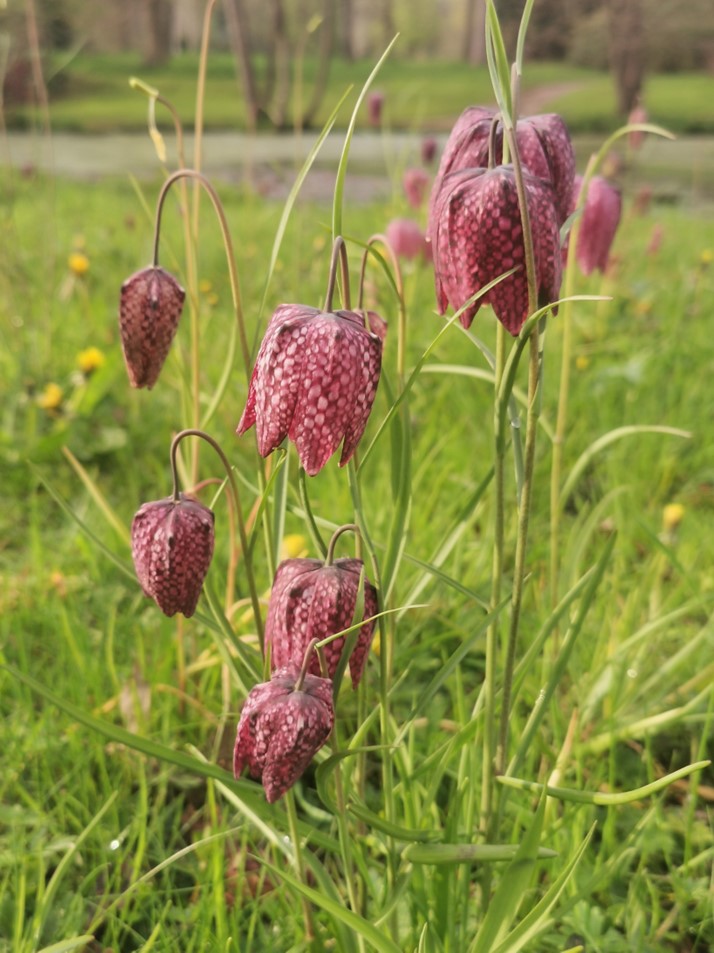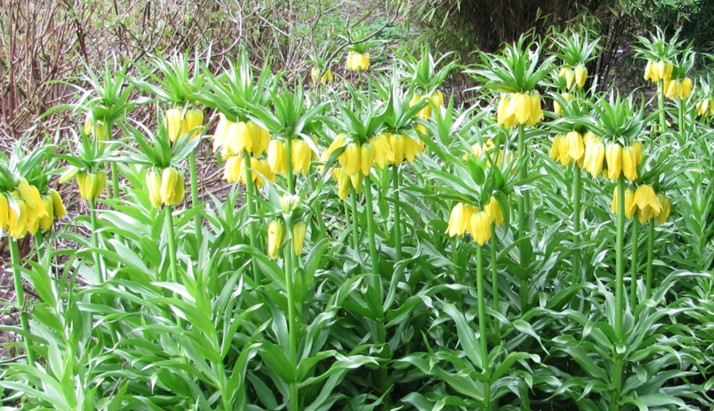Gardening: Plant Hunters Article - April/May 24
Fabulous Fritillaries by Martin Blow
A flood meadow full of the purple checkerboard flowers of Snakes Head Fritillaries (Fritillaria meleagris), Britain’s only native species, in spring is a rare but inspiring sight, now only to be found in a few protected places. However, there are an increasing number of species available to plant in your own garden.
Creating your own mini meadow of Snakes Heads doesn’t require a full-blown flood meadow! Any patch of damp grass that can be left unmowed until the autumn will allow the plants to colonise. Plants may die out in dry conditions. Bulbs can be planted in late summer or autumn about 4” / 10cm deep with some grit in the base of the hole. Pot-grown specimens can be planted at any time in the growing season. Mowing in spring or summer will severely weaken the plants and prevent self-seeding. There are many varieties and forms of Snakes Head from the best-known purple-white checkers to pure white “Alba”, to the dark purple of “Charon”. Other Fritillaries can be planted in grass or in the border.

Almost as well-known is the majestic Crown Imperial (F. imperialis) from Turkey, Iran and into Asia. These large bulbs grow to 3-4ft / 90-120cm in good conditions. The stout stems and lush leaves have a characteristic “foxy” smell. The large fleshy bulbs must be planted very deeply, around 1ft / 30cm deep if possible. This species requires some moisture retention, but good drainage so liberal amounts of garden compost will help. The soil shouldn’t be too acid. The wild species has orange flowers and many varieties have been bred to include yellow flowers and variegated leaves. There is even a short-stemmed, purple-flowered form called “Indora”.
Similar to, but smaller than, the Crown Imperial is a pale yellow F. raddeana. The softer colour and 2ft / 60cm height make it good for the smaller border or pot culture.
Fritillaria michailovskyi has striking brown and gold bells on short plants (8in / 20cm). It prefers dry and cool shade in summer and cold with some moisture, but not waterlogging, in winter.
A hunt around specialist growers will produce even more unusual species to try, but it’s worth researching growing requirements before purchasing as these do vary from species to species.
If you get the growing conditions right Fritilliaries are long-lived plants that spread and colonise when naturalised. The only pests you are likely to encounter are the usual culprits – slugs and snails and sometimes lily beetles in spring. Wildlife-friendly pellets are best to deal with the former and picking off the red adults and brown-sticky grubs for the latter.

Janet & I organise Plant Hunters’ Fairs, specialist plant fairs at wonderful locations. Please see www.planthuntersfairs.co.uk for a full list of our 2024 plant fairs. Please check our website for ticketing information and all the latest updates before travelling. Plant Fair Dates for your diary 2024:
Bodenham Arboretum, DY11 5TB on Saturday 6th April. Middleton Hall, Nr Tamworth, B78 2AE on Sunday 14th April. 1620s House and Garden, Nr. Coalville, LE67 2FW on Sunday 21st April. Chasewater Country Park, WS8 7NL on Saturday 27th April. Arley Arboretum, DY12 1SQ on Monday 27th May.



